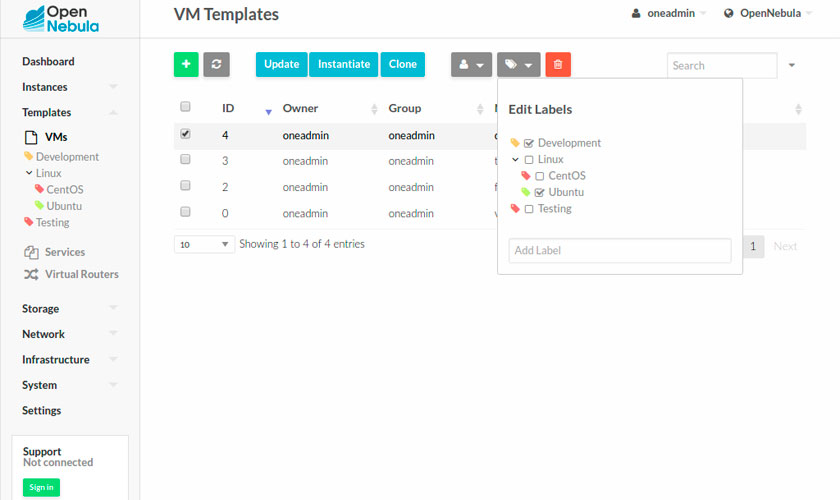One outstanding new module is the IPAM subsystem. In order to boost SDN integration, OpenNebula may be integrated with existing IPAM modules, in those cases where outsourcing of IP management is required in the Data Center. The IPAM subsystem interacts with IPAM servers using drivers, and a IPAM driver lets you delegate IP management to an external component, so that you can coordinate IP use with other virtual or bare metal servers in your Data Center.
Another great addition in the ability to use group bound tokens. The goal is that users can use OpenNebula for different projects, which are identified with different groups and users can request a couple of tokens tied to each of these groups.
In this new version all the OpenNebula drivers have been improved, group mapping in LDAP authentication has been revamped, bandwidth per VM network interface in both KVM and vCenter has been limited and among other things, SPICE support has been improved.
Our connection broker UDS Enterprise is OpenNebula Ready, ensuring compatibility and seamless integration with OpenNebula 5.2 and previous versions. VirtualCable and OpenNebula Systems work together as Technology Partnership to join the power of their software and offer their customers a next generation VDI solution
For further information on this new OpenNebula version, have a look at OpenNebula official blog








0 Comments